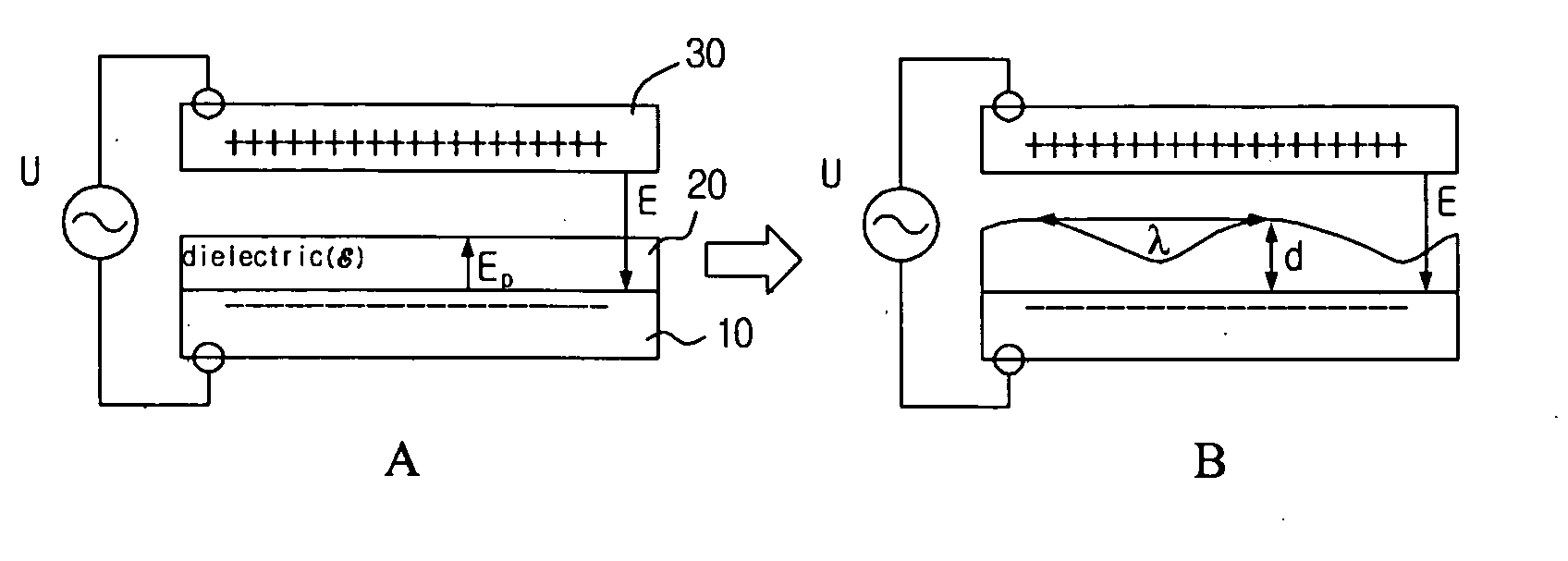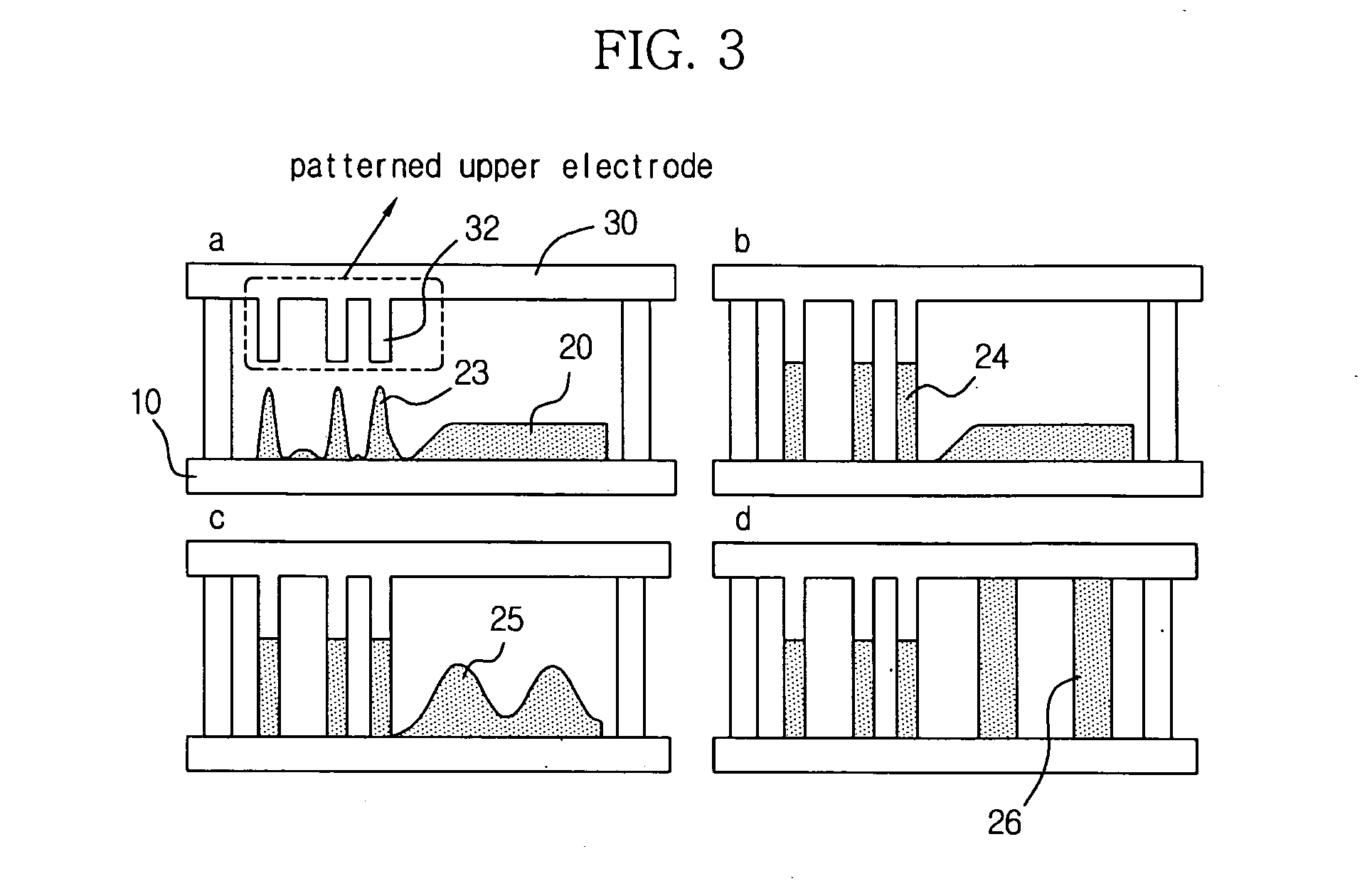Composition for forming inorganic pattern and method for forming inorganic pattern using the same
a technology of inorganic pattern and composition, which is applied in the field of composition a method for forming inorganic pattern, can solve the problems that the soft lithography method does not convey any more functionality and the method has not been reported as satisfactory, so as to prevent degeneration or precipitation
- Summary
- Abstract
- Description
- Claims
- Application Information
AI Technical Summary
Benefits of technology
Problems solved by technology
Method used
Image
Examples
example 1
Formation of ZnO Pattern
[0064]1.5 mmol of zinc 2-methoxyethoxide was mixed with an equimolar amount (1.5 mmol) of benzoylacetone under a dry atmosphere with a relative humidity (“RH”) of less than 5%. 0.5 mL of the resulting mixture was then mixed with 2.5 mL of IPA as a solvent to prepare a composition for forming an inorganic pattern. The reaction mixture was spin-coated on a silicon substrate with Cr deposited to a thickness of 100 nm as an electrode, 2 V / μm of a DC electric field was applied between the silicon substrate and an Au-coated upper electrode placed over the Cr electrode so as to leave a gap between the reaction mixture layer and the Au electrode, and the substrate was allowed to stand at room temperature for 1 hour such that the applied dielectric composition formed a pattern with regular spacing. The patterned lower (i.e., Cr) substrate was annealed at 500° C. for 3 hours under atmospheric pressure to convert the zinc precursor into ZnO, followed by removal of resid...
example 2
Formation of TiO2 Pattern
[0065]5 mmol (0.85 mL) of titanium (IV) butoxide was mixed with 2.5 mmol (0.41 g) of benzoylacetone under an atmosphere with an RH of less than 5%, to which 15 mL of pentanol and 2.5 mL of methanol were then added. 5 mmol (based on Ti) of the resulting titanium (IV) butoxide solution was then mixed with an equimolar amount of methyl acetoacetate, and 8 ml of pentanol was then added thereto to prepare a composition for forming an inorganic pattern. Analogously to Example 1, a pattern was formed by electrohydrodynamic lithography. 20 V / μm of an electric field was applied between two substrates, and formation of the pattern was observed while maintaining the electric field for 2.5 hours. After formation of the pattern, annealing was carried out to remove residual solvent and organics at 500° C. for 3 hours under a hydrazine gas atmosphere, resulting in formation of TiO2 pattern. After an electric field was applied during formation of the TiO2 pattern, microscop...
example 3
Formation of TiO2 Pattern Using Patterned Upper Electrode
[0066]A pattern was formed in the same manner as in Example 2, except that a patterned conductive Au thin film as shown in FIG. 6a was used as an upper electrode. A microscopic image of the replicated pattern is shown in FIG. 6b.
PUM
| Property | Measurement | Unit |
|---|---|---|
| DC electric field | aaaaa | aaaaa |
| frequency | aaaaa | aaaaa |
| temperature | aaaaa | aaaaa |
Abstract
Description
Claims
Application Information
 Login to View More
Login to View More - R&D
- Intellectual Property
- Life Sciences
- Materials
- Tech Scout
- Unparalleled Data Quality
- Higher Quality Content
- 60% Fewer Hallucinations
Browse by: Latest US Patents, China's latest patents, Technical Efficacy Thesaurus, Application Domain, Technology Topic, Popular Technical Reports.
© 2025 PatSnap. All rights reserved.Legal|Privacy policy|Modern Slavery Act Transparency Statement|Sitemap|About US| Contact US: help@patsnap.com



